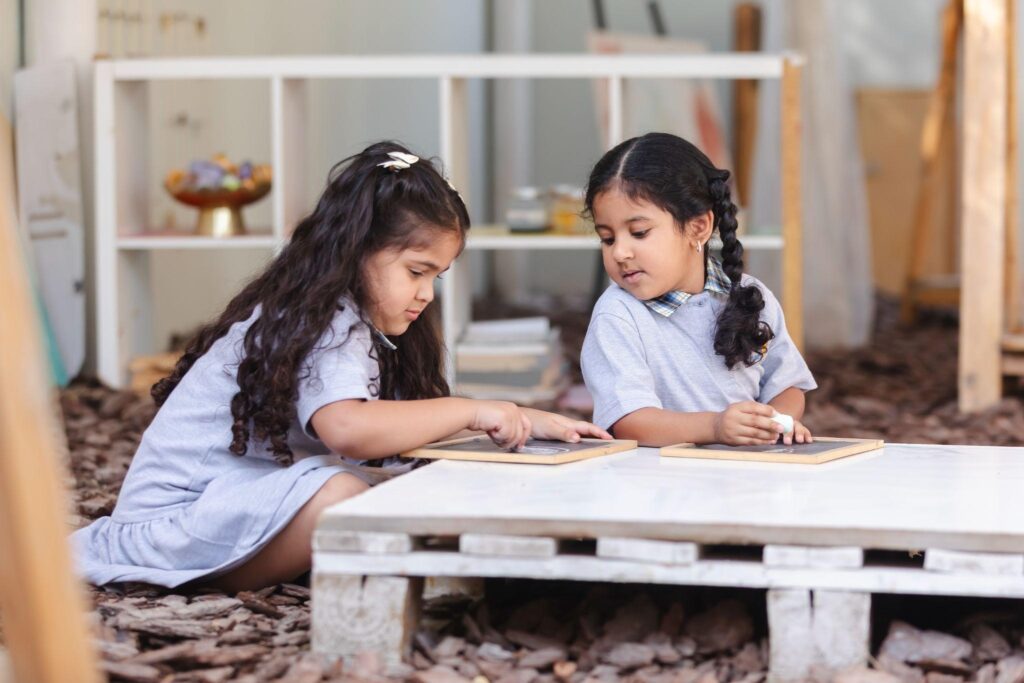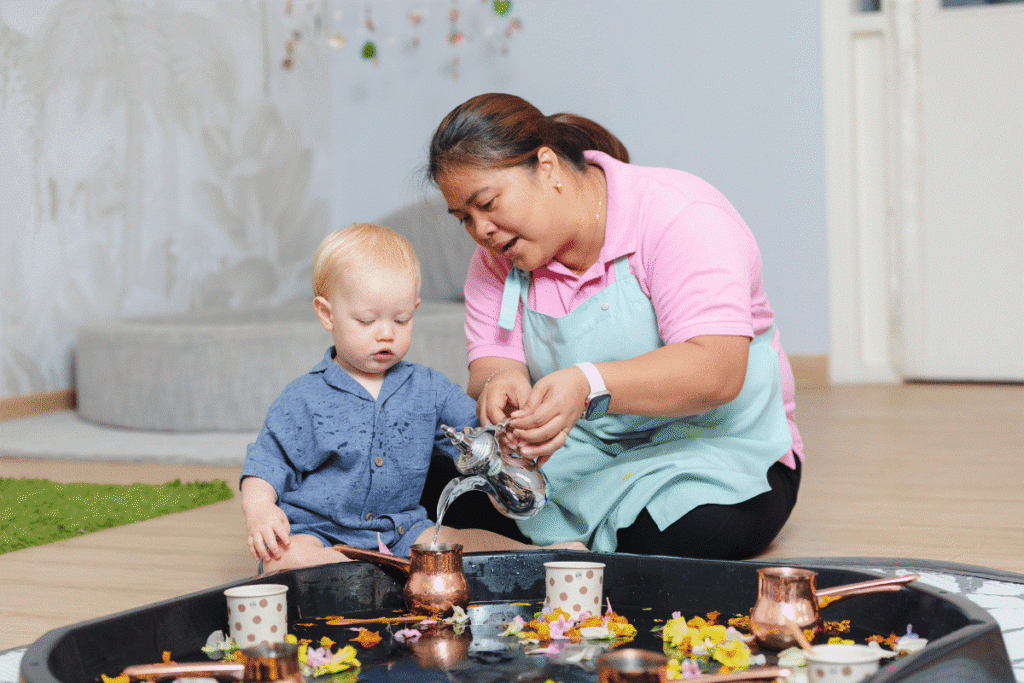When you think about your child’s early years, what matters most? Is it learning letters and numbers as quickly as possible, or is it developing a love for discovering new things? At Yellow Kite Nursery in Meydan, we believe curiosity always comes before curriculum.
Children are natural explorers. They want to know how things work, why the sky is blue, and what happens if they mix sand with water. That sense of wonder is powerful, and when nurtured, it becomes the foundation for lifelong learning.
This blog unpacks why curiosity is more valuable than rushing into formal lessons, and how wonder makes children stronger, more resilient learners

Why Curiosity Matters More Than Curriculum
Curriculum has its place, but it often focuses on outcomes: knowing the alphabet, writing names, counting to ten. These are important skills, but they should not be the starting point.
Curiosity, on the other hand, is about the process. It’s about:
- Asking questions without fear of being “wrong”
- Exploring ideas freely through play
- Building problem-solving skills naturally
- Learning because it’s exciting, not because it’s required
“When we prioritise curiosity, we focus on how children learn, not just what they learn. Shifting the attention from outcomes to the learning process makes the experience richer, deeper, and far more engaging.” – Laura, Principal of Yellow Kite Nursery
The Science Behind Wonder
Research in early childhood education consistently shows that children who learn through curiosity and play develop stronger skills in critical thinking, creativity, and emotional regulation.
Some key findings:
- Active learning sticks longer. Children remember more when they discover the answer themselves instead of being told.
- Curiosity fuels motivation. A child who asks “why?” will keep trying until they understand.
- Exploration builds resilience. When children experiment, they see that mistakes are part of learning.
In short, wonder doesn’t just feel good – it creates the right conditions for the brain to grow.
Real-Life Examples of Curiosity in Action
At our nursery in Meydan, we see this every day:
- A child notices a snail in the garden and suddenly the whole group wants to know where it lives, what it eats, and how it moves. That moment becomes a spontaneous science lesson.
- Another child starts pouring water into different containers. Before long, they’re exploring volume, capacity, and problem-solving without needing a worksheet.
- A group of children role-play running a shop. They practise maths through counting items, language skills through conversation, and social skills through negotiation.
“As adults, we sometimes overcomplicate children’s learning. Yet often, the greatest growth comes from the simplest activities.” – Laura, Principal of Yellow Kite Nursery
Why Rushing Formal Learning Can Backfire
Many parents worry if their child isn’t reading or writing “early enough.” But research shows that pushing academics too soon can cause unnecessary stress and limit creativity.
Here’s why:
- Children who learn too formally too soon may lose interest in learning altogether.
- Focusing only on outcomes can reduce confidence if a child struggles.
- Overly structured lessons often ignore the emotional and social growth that is equally important at this age.
In contrast, children who learn through curiosity often end up catching up – and even excelling – because they have developed the desire to learn.
How Parents Can Nurture Curiosity at Home
You don’t need fancy tools or expensive resources. Creating a curiosity-rich environment can be simple.
Here are some ideas:
- Encourage questions. Instead of always giving an answer, ask, “What do you think?”
- Offer open-ended materials. Blocks, sand, sticks, or recycled items inspire creativity.
- Say yes to mess. Mud kitchens, paint splashes, and water play often lead to the best discoveries.
- Value the process. Celebrate effort and exploration rather than only the final result.
- Model curiosity. Show your child that you’re still learning too by wondering aloud.
“Of course, letters and numbers matter – and we value them. But we also know the brain develops from the bottom up. Writing doesn’t begin with fingers; it begins with strong cores, shoulders, elbows, and wrists. The fingers are the last muscles the brain learns to control. By building strength in the bigger muscles first, we set children up for real success. Otherwise, it’s a bit like trying to run before you’ve learned to walk.” – Laura, Principal of Yellow Kite Nursery
The Role of Nursery in Fostering Wonder
At Yellow Kite Nursery in Meydan, our role is not to push a rigid curriculum but to create an environment where children feel free to explore. Our classrooms are designed for open-ended play, rich conversations, and plenty of outdoor adventures.
We see ourselves as guides, not instructors. By following the children’s lead, we:
- Build on their natural interests
- Support language and social development in context
- Create a balance of structure and freedom
- Ensure children feel confident to take risks in their learning
This approach means children leave nursery not just with skills but with the spark that drives them to keep learning long after.
Why Wonder Creates Stronger Learners
Children who grow up with curiosity as their compass develop:
- A love of learning that lasts
- Stronger problem-solving skills
- Greater resilience when things get tricky
- The ability to think creatively
- Confidence in their own ideas
These are the qualities that make them not only successful in school but also adaptable and capable in life.

Final Thoughts
As parents and educators, it’s natural to want the best for our children. But the “best” doesn’t always mean pushing them ahead of the curve. Sometimes, the best thing we can do is slow down, step back, and let them wonder.
